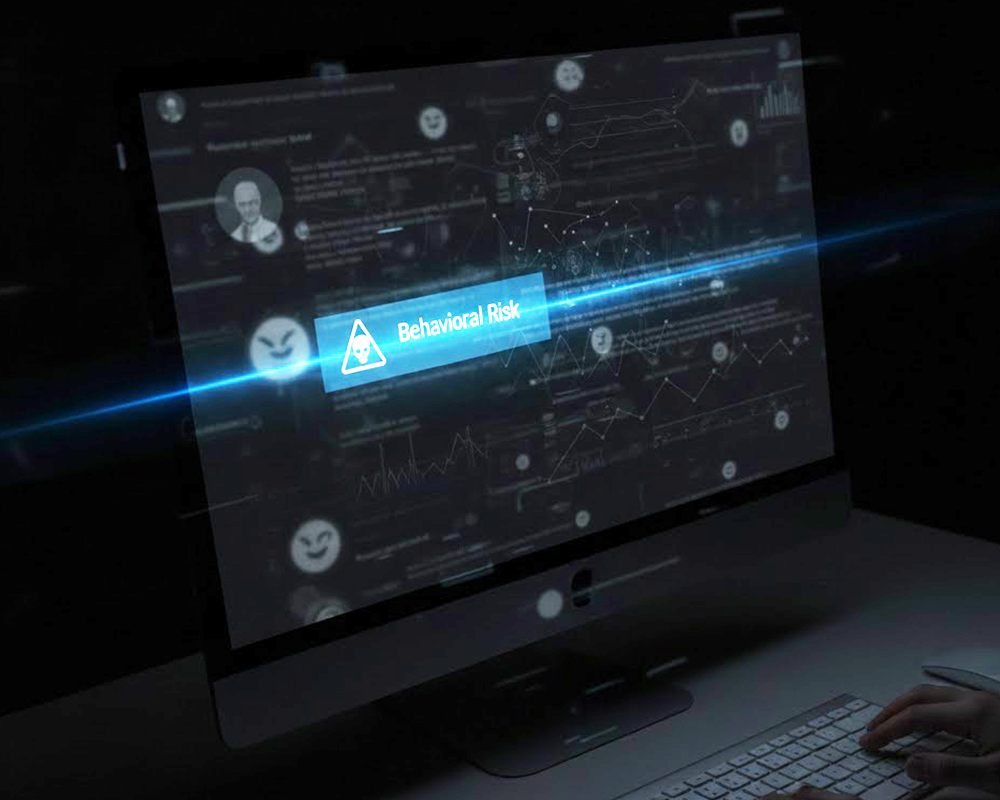Six years ago, at the 2019 PBSA conference, we identified a curious paradox plaguing our industry. Legal experts and seasoned practitioners were simultaneously preaching two contradictory mantras: "Avoid litigation and automate," while insisting that "Human intervention is key to avoid litigation." The industry seemed caught in an impossible choice - embrace efficiency or accuracy, but never both.
Today, that paradox hasn't just persisted, it's become the defining challenge of modern background screening. And frankly, we called it.
What we've witnessed since 2019 reads like a case study in unintended consequences. The rush toward automation has coincided with an explosion of privacy legislation, Clean Slate laws, and increasingly sophisticated identity fraud. Meanwhile, the stakes have never been higher. Remote workforces span multiple jurisdictions, deepfake technology can fabricate credentials with startling accuracy, and a single bad hire can generate millions in liability, or worse, put vulnerable populations at risk.
The industry's response? Double down on the same flawed thinking that created the paradox in the first place. More databases, faster processing, cheaper prices. It's like trying to solve a jigsaw puzzle by throwing more pieces at the table instead of examining how they fit together.
But here's what we've learned after processing millions of background checks and watching countless organizations grapple with these challenges: The solution was never about choosing between automation and human intervention. It's about comprehensive data gathering that leverages both technology and human expertise to build complete, accurate pictures.
The curious paradox we identified in 2019 wasn't really about choosing sides. It was about recognizing that surface-level screening - whether automated or manual - simply isn't enough anymore. In 2025, a comprehensive investigation isn't just a competitive advantage; it's the only approach that works.
The question isn't whether to automate or investigate. It's whether you're gathering comprehensive information that protects everyone involved. Your organization, your employees, and the candidates themselves. Because in today's landscape, incomplete information isn't just inadequate - it's dangerous.
The 2019-2025 Transformation: What Changed Everything
The six years following that pivotal PBSA conference didn't just validate our concerns about industry paradoxes. They turned those theoretical challenges into daily operational realities. While the background screening industry was busy debating automation versus human intervention, the world fundamentally shifted around us. What emerged was a landscape that demands comprehensive investigation more than ever, precisely because the easy answers became exponentially more complicated.
The Clean Slate Revolution
When we wrote about the "identity protection paradox" in 2019, Clean Slate legislation was largely theoretical. Today, it's operational reality reshaping how we access criminal records. New York's Clean Slate Act automatically seals eligible misdemeanor convictions after three years and felony convictions after eight years. California expanded its record-clearing provisions dramatically with Senate Bill 731. Michigan pioneered truly automated record clearing in 2021, with up to two felonies and four misdemeanors automatically disappearing from standard searches.
The result? Records that were accessible in 2019 simply vanish from traditional database searches in 2025. That DUI from 2016? Sealed. The assault charge that was reduced to a misdemeanor in 2020? Gone. The financial fraud conviction from 2017? Invisible to standard screening.
But here's what the legislation architects missed: a comprehensive investigation doesn't rely solely on criminal databases. When court records are sealed from public view, investigative approaches find relevant information through professional licensing boards, civil court records, regulatory sanctions, and employment verification. The information exists - it just requires knowing where to look and how to piece it together legally and ethically.
The State Privacy Act Tsunami
The California Consumer Privacy Act was just the beginning. By 2025, we're navigating a patchwork of state privacy regulations that would make a constitutional lawyer dizzy. Virginia's Consumer Data Protection Act, Connecticut's comprehensive privacy law, and a dozen other state-level regulations have created a compliance landscape where "one-size-fits-all" screening approaches fail spectacularly.
Each state defines personal information differently. Each has distinct requirements for data retention, disposal, and candidate rights. Colorado requires specific disclosures that don't apply in Texas. Illinois has biometric privacy laws that don't exist in Florida. What this means practically: a comprehensive investigation requires state-specific expertise, not just nationwide database access.
Ban-the-Box Evolution: From 22 to 150+
In 2019, Ban-the-Box laws existed in 22 states. Today, we're tracking compliance requirements across 37+ states and over 150 municipalities. But it's not just about removing criminal history questions from applications anymore. New York City's Fair Chance Act requires individualized assessments and multi-step adverse action processes. San Francisco has specific requirements for conditional offers. Philadelphia mandates particular waiting periods.
The complexity isn't just legal - it's operational. When you can't ask about criminal history upfront but still need to assess candidate suitability, a comprehensive investigation becomes essential. You need employment verification that reveals gaps in employment history. You need professional reference checks that uncover character concerns. You need education verification that confirms candidates have the qualifications they claim.
From Location-Based to Jurisdiction-Blind Screening
The 2019 background screening model assumed candidates lived where they worked, worked where they were hired, and maintained relatively stable geographic patterns. The remote work revolution obliterated those assumptions overnight.
Today's candidate might live in New York, work remotely for a California company, and have previous employment history spanning Texas, Florida, and Colorado. Their education could be from online institutions with accreditation questions. Their professional licenses might be issued by multiple states with varying reciprocity agreements.
Standard database searches fail miserably in this environment. A national criminal database might miss the DUI in the small Texas county where they lived during the pandemic. State-specific searches miss relevant records in jurisdictions they've never claimed as permanent residence. Employment verification becomes a multi-state challenge requiring direct contact with previous employers across time zones and legal frameworks.
A comprehensive investigation adapts to this reality by conducting thorough address history research, multi-jurisdictional criminal searches, and detailed employment verification that follows the candidate's actual work history rather than assumptions about geographic stability.
The Identity Verification Challenge
Remote hiring created unprecedented identity verification challenges. In 2019, candidates appeared in person for interviews, provided physical documentation, and established identity through face-to-face interaction. Today's hiring managers meet candidates through video calls, receive documentation via email or upload portals, and make hiring decisions without ever meeting the person they're hiring.
This shift coincided with sophisticated identity fraud capabilities. Deepfake technology can create convincing video interviews. Document fraud has evolved beyond simple falsification to complete synthetic identity creation. Social security numbers can be generated, addresses can be fabricated, and employment histories can be invented with enough sophistication to fool surface-level verification.
A comprehensive investigation responds to these challenges through multi-source identity verification, direct employer contact for employment history, and detailed reference interviews that reveal inconsistencies that automated systems miss.
The curious paradoxes we identified in 2019 weren't really paradoxes at all. They were symptoms of an industry that had lost sight of its fundamental purpose: providing complete, accurate information to support sound decision-making. The events of the past six years didn't create new problems - they exposed existing inadequacies that a comprehensive investigation was already designed to address.
The New Paradoxes of 2025
These aren't the same paradoxes dressed up in modern clothing. They're fundamentally different challenges that expose how surface-level solutions create deeper problems. What's particularly maddening is watching the industry respond to each new paradox with the same flawed thinking that created the original mess.
The "Clean Slate Transparency" Paradox
Here's the beautiful irony of Clean Slate legislation: laws designed to increase transparency for individuals have created opacity for employers. Legislators promised that automatic record sealing would help people with criminal histories find employment while protecting public safety. The reality? Employers now need a more comprehensive investigation than ever to understand what they can't see.
Consider this scenario: Your candidate has a perfectly clean criminal background check. Not a single hit in any database. Clean as a whistle. But something feels off during the reference check - a three-month employment gap that doesn't quite line up with their explanation, a previous supervisor who seems oddly reluctant to provide details, a professional license that shows a brief suspension with no explanation in public records.
In 2019, you might have found a criminal conviction that explained these red flags. In 2025, that conviction might be sealed under Clean Slate laws, invisible to standard screening but still relevant to job performance. The legislation didn't eliminate the underlying concerns. It just made them harder to identify through conventional means.
The supposed solution? "Don't worry about sealed records - they're old and the person has been rehabilitated." But that misses the point entirely. The issue isn't whether someone deserves a second chance. It's whether employers have enough information to make informed decisions about fit, supervision needs, and risk management.
The paradox resolves when you realize that sealed criminal records were never the only source of relevant information. They were just the easiest to find. A comprehensive investigation reveals character and judgment through patterns that no single record type can provide.
The "AI Efficiency" Paradox
The promise was seductive: Artificial intelligence would make background screening faster, cheaper, and more accurate. Feed the machine some parameters, let it churn through databases, and get perfect results in minutes instead of days. The industry embraced AI like a silver bullet for all its operational challenges.
The reality has been spectacularly different. AI excels at processing large volumes of standardized data, but background screening is inherently messy, contextual, and nuanced. The more sophisticated our AI systems become, the more we discover how much they miss.
Take name matching - a seemingly simple task. AI sees "John Smith Jr." and "John Smith Sr." as potentially the same person. It flags a criminal record for review. But here's what AI can't determine: whether Jr. and Sr. live at the same address (family connection), whether Jr. was a minor when Sr.'s conviction occurred (potential identity confusion), whether the conviction location aligns with either person's address history (geographical likelihood), or whether the conviction details match the candidate's background pattern (behavioral consistency).
A human investigator processes these contextual clues intuitively. They notice that Jr. was twelve when Sr. was convicted. They see that Sr.'s address history places him on the opposite coast during the alleged offense period. They recognize that the conviction pattern doesn't match the professional credentials and employment history they've verified for Jr.
But here's the real kicker: AI's false positive rate is actually increasing as databases become more comprehensive. More data doesn't mean better accuracy when the underlying matching algorithms can't distinguish between correlation and causation.
The paradox isn't that AI is useless, it's that AI's greatest strength (processing volume) creates its greatest weakness (missing context). The more we rely on automated efficiency, the more we need human expertise to interpret what the machines have found.
The "Privacy Protection" Paradox (2025 Edition)
The 2019 version of this paradox focused on balancing candidate privacy with screening accuracy. The 2025 evolution is far more complex: protecting candidates often requires more thorough investigation, not less.
Here's how it works in practice: Automated screening systems frequently generate false positives that damage innocent candidates. A database match flags someone for a criminal record that doesn't belong to them. Standard adverse action procedures require the employer to inform the candidate that they're being rejected based on this false information. The candidate now has to prove a negative - that they're not the person in the database.
This process can take weeks or months to resolve. Meanwhile, the candidate loses the job opportunity, suffers reputation damage, and expends significant time and resources fighting an algorithmic error.
A comprehensive investigation prevents this scenario by verifying information before it becomes a problem. Instead of rejecting candidates based on database hits, investigators confirm whether records actually belong to the person being screened. They cross-reference multiple identifiers, verify timelines, and confirm geographical consistency before reporting any adverse information.
The result? Candidates are protected from false accusations, employers get accurate information, and the screening process actually serves its intended purpose. The legislative intent is admirable - to protect candidate privacy. The practical effect is often the opposite, exposing candidates to automated errors they can't easily dispute.
These paradoxes aren't abstract theoretical problems. They're daily operational realities that create real costs for real organizations hiring real people. The solution isn't choosing between efficiency and accuracy, automation and investigation, privacy and transparency. The solution is comprehensive data gathering that resolves these false choices by providing complete, accurate, contextual information that serves everyone's interests.
Why Comprehensive Screening Matters More Than Ever
We've spent considerable time identifying the paradoxes plaguing modern background screening. Now let's examine why these aren't just theoretical problems, but operational crises that demand fundamental changes in how we approach candidate evaluation.
The Single-Source Failure Pattern
The most dangerous myth in background screening is that comprehensive databases provide comprehensive information. This myth persists despite overwhelming evidence that database-dependent screening creates systematic gaps in critical information.
The pattern is predictable: organizations rely on automated systems that query multiple databases, receive "comprehensive" reports, and make hiring decisions based on incomplete information. The failure occurs not because databases are inherently flawed, but because they're treated as complete sources rather than starting points for investigation.
Database limitations are well-documented. The Department of Justice acknowledged that the FBI's National Crime Information Center database lacks final disposition information for approximately 50% of its arrest records. State repositories update at different intervals - some weekly, others quarterly, many irregularly. Local courts often maintain separate systems that don't feed into centralized databases.
Professional licensing boards frequently maintain disciplinary information that doesn't appear in general database searches. Employment verification through third-party databases relies on employer participation that's voluntary and inconsistent. Educational credential databases depend on institutional cooperation that varies significantly across institutions and geographic regions.
These aren't theoretical gaps - they're systematic limitations that create predictable blind spots in database-dependent screening.
Multi-Jurisdictional Gaps: The Remote Work Challenge
The distributed workforce revolution has exposed another fundamental flaw in database-dependent screening: jurisdictional coverage gaps that create perfect storms of missed information.
Consider this scenario: Your candidate lived in California during college (2018-2022), worked remotely from Colorado during the pandemic (2020-2022), moved to Texas for a brief in-person role (2022-2023), and now works remotely from Florida for your New York-based company. A standard "comprehensive" national database search might catch major felonies, but here's what it's likely to miss:
- The DUI conviction in a small Colorado county that doesn't report to national databases promptly.
- The civil judgment in Texas related to lease violations that suggests financial irresponsibility.
- The professional license suspension in California that was resolved, but indicates past performance issues.
- The employment gap that occurred during the Colorado period that raises questions about their timeline.
Each of these data points is individually minor but collectively significant. A comprehensive investigation maps the candidate's actual geographic and employment history, then systematically searches relevant jurisdictions and verifies claims through direct contact.
The difference isn't just thoroughness, it's accuracy. Database searches might flag someone for records in states they've never visited, while missing actual issues in jurisdictions where they lived and worked.
The Power of Complete Information
Six years ago, we identified a paradox that was tearing our industry apart: the impossible choice between automation and human intervention, efficiency and accuracy, speed and thoroughness. Today, as we survey the wreckage of organizations that chose poorly, the resolution has never been clearer.
The paradoxes that plagued our industry weren't really paradoxes at all. They were symptoms of an approach that had lost sight of its fundamental purpose. A comprehensive investigation doesn't just resolve these false choices - it makes them irrelevant by delivering what everyone actually needs: certainty. The future of background screening isn't about choosing between competing philosophies. It's about embracing comprehensive investigation as the standard that protects everyone's interests.
The only question remaining is whether you're ready to act on what you now know. Don't let your organization become another cautionary tale of incomplete screening. At CIChecked, we've spent over two decades perfecting a comprehensive investigation methodology that delivers the complete picture you need to make confident hiring decisions.
Whether you're struggling with false positives from automated systems, missing critical information through database-only searches, or navigating the compliance complexities of multi-state operations, our licensed investigators provide the certainty your organization deserves.
Ready to explore whether your background screening operations could benefit from human intervention? Contact CIChecked at (518) 271-7546 to schedule a confidential consultation. Our team specializes in comprehensive investigations that provide our clients with the most complete picture for confident hiring.






%20Featured%20Image.png)